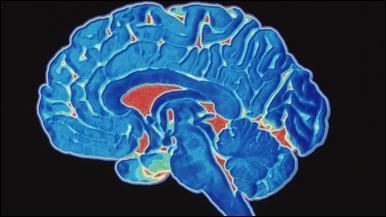Estudo traz novas informações sobre os mecanismos da propagação do câncer para o cérebro

[Por Henrique Cortez, do EcoDebate] Recente artigo [The Vascular Basement Membrane as “Soil” in Brain Metastasis] publicado na PLoS ONE tenta acrescentar à nossa compreensão novas informações sobre os mecanismos da propagação do câncer para o cérebro e como estes cânceres se estabelecem e começam a crescer. Os pesquisadores salientam que isso poderia levar ao desenvolvimento de novos tratamentos, principalmente visando metástases cerebrais terminais.
Os cientistas acreditam ter encontrado um caminho potencial para parar o estabelecimento do câncer no cérebro, o que pode ser vital para evitar que ele se torne terminal. Os pesquisadores descobriram que as células cancerosas “sequestram” vasos sanguíneos do cérebro para obter todos os nutrientes de que precisam para se estabelecer e crescer.
A chave para isso é uma proteína na superfície das células cancerosas chamada integrina (integrin) que lhes permite manter a ligação com vasos sanguíneos. No entanto, drogas que bloqueiam a integrina podem parar a propagação do câncer.
A pesquisa é importante porque 20% de todos os doentes com câncer evoluem para metástases terminais exatamente porque a doença que se espalhou para o cérebro.
Na verdade, as metástases cerebrais são as mais comuns dos tumores malignos do sistema nervoso central. Nos tratamentos atuais, após um câncer se espalhar para o cérebro o panorama não é bom, com a sobrevida mediana máxima do tratamento de nove meses.
Uma nova compreensão
Anteriormente, presumia-se que as células tumorais cresciam sobre as células que compõem a matéria cinzenta e branca do cérebro – os neurônios e células gliais.
A pesquisa descobriu que o câncer metastático cerebral começa a crescer nas paredes dos vasos sanguíneos no cérebro em mais de 95% dos casos e não sobre as células nervosas. Eles analisaram amostras de uma variedade de tipos de células de câncer humano e de camundongos.
O artigo “The Vascular Basement Membrane as “Soil” in Brain Metastasis” [Carbonell WS, Ansorge O, Sibson N, Muschel R (2009) The Vascular Basement Membrane as “Soil” in Brain Metastasis. PLoS ONE 4(6): e5857. doi:10.1371/journal.pone.0005857] está disponível para acesso integral. Para acessar o artigo, no formato HTML, clique aqui.
Para maiores informações transcrevemos, abaixo, o abstract:
The Vascular Basement Membrane as “Soil” in Brain Metastasis
W. Shawn Carbonell1*, Olaf Ansorge2, Nicola Sibson1, Ruth Muschel1
1 Gray Institute for Radiation Oncology and Biology, University of Oxford, Oxford, United Kingdom, 2 Department of Neuropathology, University of Oxford, Oxford, United Kingdom
Abstract
Brain-specific homing and direct interactions with the neural substance are prominent hypotheses for brain metastasis formation and a modern manifestation of Paget’s “seed and soil” concept. However, there is little direct evidence for this “neurotropic” growth in vivo. In contrast, many experimental studies have anecdotally noted the propensity of metastatic cells to grow along the exterior of pre-existing vessels of the CNS, a process termed vascular cooption. These observations suggest the “soil” for malignant cells in the CNS may well be vascular, rather than neuronal. We used in vivo experimental models of brain metastasis and analysis of human clinical specimens to test this hypothesis. Indeed, over 95% of early micrometastases examined demonstrated vascular cooption with little evidence for isolated neurotropic growth. This vessel interaction was adhesive in nature implicating the vascular basement membrane (VBM) as the active substrate for tumor cell growth in the brain. Accordingly, VBM promoted adhesion and invasion of malignant cells and was sufficient for tumor growth prior to any evidence of angiogenesis. Blockade or loss of the ?1 integrin subunit in tumor cells prevented adhesion to VBM and attenuated metastasis establishment and growth in vivo. Our data establishes a new understanding of CNS metastasis formation and identifies the neurovasculature as the critical partner for such growth. Further, we have elucidated the mechanism of vascular cooption for the first time. These findings may help inform the design of effective molecular therapies for patients with fatal CNS malignancies.
Carbonell, W., Ansorge, O., Sibson, N., & Muschel, R. (2009). The Vascular Basement Membrane as “Soil” in Brain Metastasis PLoS ONE, 4 (6) DOI: 10.1371/journal.pone.0005857
Editor: Nils Cordes, Dresden University of Technology, Germany.
Received: March 30, 2009; Accepted: May 11, 2009; Published: June 10, 2009
Copyright: © 2009 Carbonell et al. This is an open-access article distributed under the terms of the Creative Commons Attribution License, which permits unrestricted use, distribution, and reproduction in any medium, provided the original author and source are credited.
Funding: This work was supported by grants from Cancer Research UK/CRUK (to RJM and NRS), United States Department of Defense/DOD (RJM), National Institutes of Health/NIH CA46830 (RJM) and the Medical Research Council/MRC (RJM). The funders had no role in study design, data collection and analysis, decision to publish, or preparation of the manuscript.
Competing interests: The authors have declared that no competing interests exist.
* E-mail: bigaxon{at}bigaxon.com
[EcoDebate, 16/06/2009]
Inclusão na lista de distribuição do Boletim Diário do Portal EcoDebate
Caso queira ser incluído(a) na lista de distribuição de nosso boletim diário, basta que envie um e-mail para newsletter_ecodebate-subscribe@googlegroups.com . O seu e-mail será incluído e você receberá uma mensagem solicitando que confirme a inscrição.